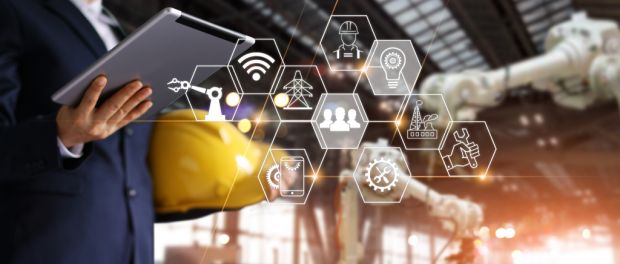Is your construction site COVID-Secure?

With the current pandemic, health and safety in the construction industry has never been so important. After analysing recent data from the Office of National Statistics (ONS), Yorkshire Brickwork Contractors found that construction has a higher rate of deaths related to COVID-19 when compared to other sectors. Specifically, among low-skilled construction workers, the death rate was 25.9 per 100,000 males with an additional 87 deaths of workers in the skilled construction workers occupation category.
We are in stage four of the pandemic, yet the government has encouraged construction workers to go back to work, alongside the manufacturing industry. In order to help businesses understand if sites are safe for workers to return to, Yorkshire Brickwork Contractors, which works closely with its nominated safety consultant, HS Direct, has interviewed experts in technology to see what can be adapted and used in the construction industry to help keep workers safe.
One of the main concerns around returning to work is how workers can maintain safety through social distancing on construction sites. Tom Cannon, director of Tracked Carriers, discusses material handling and how social distancing may affect this. Tom commented,
“Manual handling may become an issue if social distancing isn’t respected, many tasks are still carried out with a hands-on approach which can be problematic when several people are required to lift or carry heavy goods.
“New generations of lifting equipment are allowing increased social distancing on-site, spider cranes and high-capacity material lifts are prime examples of this, as they can access restricted areas and allow a single operator to lift and hold heavy items in position and are changing the way many tasks are carried out.”
With social distancing being a core concept in keeping our employees safe, it’s important that technology can be incorporated so the government advice can be followed. Tim Fitch, director of Invennt, business consultants specialising in construction, suggests investing in technology such as Reactec:
“We have seen businesses create programs for training commissioners who are there to manage, maintain and ensure that this two-metre rule is adopted correctly. However, we have also seen companies that have developed technologies, the one I am thinking about in particular is a company called Reactec.
“They have developed wearable technology, initially for monitoring Hand Arm Vibration (HAVs) risks. The device looks like a rugged Fitbit, designed to measure the amount of vibration that goes into your arm from power tools. The great thing about their technology is that you wear it, and it automatically uploads the data into the cloud, getting continuous measurements from a particular device that’s associated with a worker.
“Now they have taken this technology, upgraded it to include and measure social distancing. It advises how close you are to fellow workers who are also wearing one, tracking throughout the day, even a week or a month, however long the lockdown lasts. You get a live update on how well social distancing has been implemented on your site. As anyone who’s trying to social distance knows, you’re bound to get close to people as you pass by them in the street, but with this technology, you’ll know who it was and how long the exposure was. This is a quickly adopted technology that’s very helpful for the current environment.”
Following Boris Johnson’s call for companies to make sure they are ‘COVID-secure’ ahead of employees returning to work, Inivos, (who regularly decontaminate more than two fifths (41%) of NHS hospitals with their innovative Hydrogen Peroxide Vapour (HPV) and Ultraviolet-C light (UV-C) technologies) has launched a new Workplace Infection Prevention Assessment that helps businesses – including those in the construction sector – to identify and address contamination risks – including COVID-19.
The assessment identifies risks for viral and bacterial spread across five main vectors – water, surfaces, air, people and food – and provides organisations with clear actions to help control the potential transmission of viruses and bacteria. The evaluation includes a questionnaire as well as a full survey of the business environment, with an in-depth report delivered at completion. To enable business leaders to activate the service while maintaining social distancing measure, the entire service can be completed remotely by Zoom, Teams or Skype.
Tautvydas Karitonas, Head of Research and Development at Inivos, commented:
“Although many businesses will have plans to manually deep-clean their workspaces, manual cleaning on its own is not enough to ensure an environment is COVID-secure. We know that conscientious business leaders will be looking for more robust measures to ensure a safe space for their workers, guests, and tenants.”
In order to ensure employees are working in safe conditions, Yorkshire Brickwork Contractors has followed government guidance throughout the pandemic. With its clients returning back to work it has helped enforce health and safety guidance further with many developments adapting to social distancing rules with extensive signage across sites and uniforms to remind workers to work safely.
Managing Director, Michael Wynn said:
“At Yorkshire Brickwork Contractors we have always taken pride in our approach to health and safety, making sure all of our operatives and supervisors carry the relevant training qualifications for every job. With the recent pandemic, it is important that we adapt our way of working to follow government guidance whilst incorporating our current standards.”

